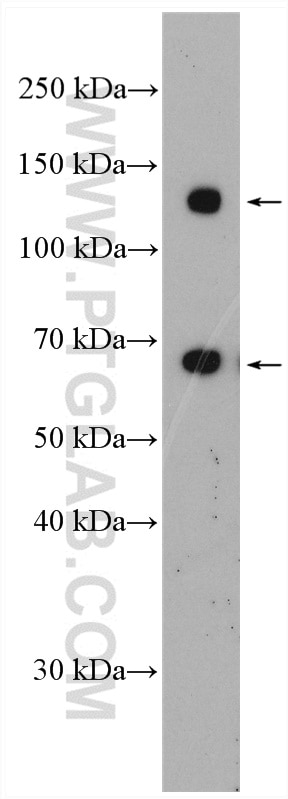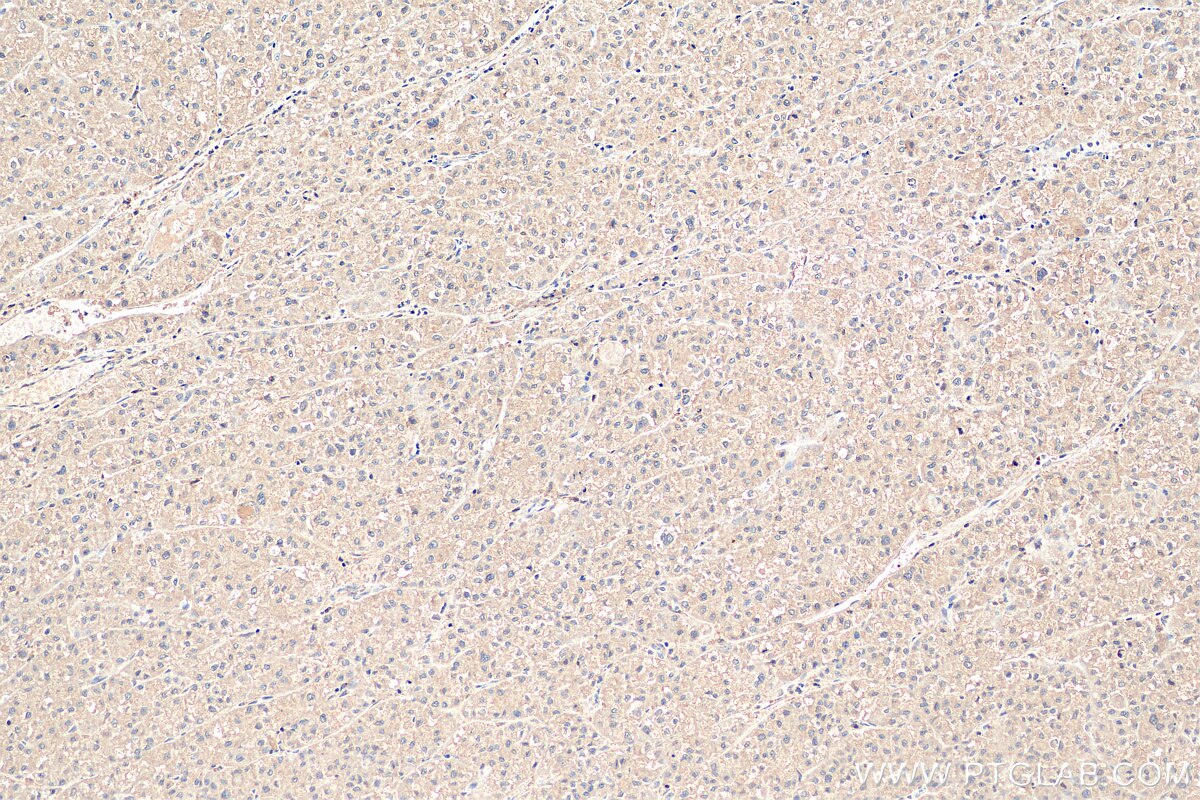Anticorps Polyclonal de lapin anti-PNPLA3
PNPLA3 Polyclonal Antibody for WB, IHC, ELISA
Hôte / Isotype
Lapin / IgG
Réactivité testée
Humain, souris et plus (2)
Applications
WB, IHC, ELISA
Conjugaison
Non conjugué
N° de cat : 11442-1-AP
Synonymes
Galerie de données de validation
Applications testées
| Résultats positifs en WB | cellules L02, |
| Résultats positifs en IHC | tissu de cancer du foie humain, il est suggéré de démasquer l'antigène avec un tampon de TE buffer pH 9.0; (*) À défaut, 'le démasquage de l'antigène peut être 'effectué avec un tampon citrate pH 6,0. |
Dilution recommandée
| Application | Dilution |
|---|---|
| Western Blot (WB) | WB : 1:500-1:1000 |
| Immunohistochimie (IHC) | IHC : 1:50-1:500 |
| It is recommended that this reagent should be titrated in each testing system to obtain optimal results. | |
| Sample-dependent, check data in validation data gallery | |
Applications publiées
| WB | See 4 publications below |
Informations sur le produit
11442-1-AP cible PNPLA3 dans les applications de WB, IHC, ELISA et montre une réactivité avec des échantillons Humain, souris
| Réactivité | Humain, souris |
| Réactivité citée | rat, Humain, poisson-zèbre, souris |
| Hôte / Isotype | Lapin / IgG |
| Clonalité | Polyclonal |
| Type | Anticorps |
| Immunogène | PNPLA3 Protéine recombinante Ag1959 |
| Nom complet | patatin-like phospholipase domain containing 3 |
| Masse moléculaire calculée | 481 aa, 53 kDa |
| Poids moléculaire observé | 50-70 kDa, 130-150 kDa |
| Numéro d’acquisition GenBank | BC014449 |
| Symbole du gène | PNPLA3 |
| Identification du gène (NCBI) | 80339 |
| Conjugaison | Non conjugué |
| Forme | Liquide |
| Méthode de purification | Purification par affinité contre l'antigène |
| Tampon de stockage | PBS with 0.02% sodium azide and 50% glycerol |
| Conditions de stockage | Stocker à -20°C. Stable pendant un an après l'expédition. L'aliquotage n'est pas nécessaire pour le stockage à -20oC Les 20ul contiennent 0,1% de BSA. |
Informations générales
PNPLA3 belongs to a family of proteins that share a domain that was first identified in patatin, a major soluble protein of potato tubers with nonspecific acyl hydrolase activity. The domain differs from classical lipases by employing a catalytic dyad (Ser-Asp), rather than a catalytic triad, to effect hydrolysis. PNPLA3 is expressed primarily in liver and adipose tissue, in which it partitions to membranes and lipid droplets. Real-time PCR of cDNA from human tissues indicated that PNPLA3 expression was highest in the liver, followed by skin and adipose tissue. PNPLA3 is expressed at the highest levels in adipose tissue of mice. The PNPLA3 protein was expected at 50-70 kDa, as observed; the additional band at approximately 130-150 kDa is a oligomer bands. (PMID: 20385813, PMID: 24931521, PMID: 23023705)
Protocole
| Product Specific Protocols | |
|---|---|
| WB protocol for PNPLA3 antibody 11442-1-AP | Download protocol |
| IHC protocol for PNPLA3 antibody 11442-1-AP | Download protocol |
| Standard Protocols | |
|---|---|
| Click here to view our Standard Protocols |
Publications
| Species | Application | Title |
|---|---|---|
Diabetes Rab8a Deficiency in Skeletal Muscle Causes Hyperlipidemia and Hepatosteatosis Via Impairment of Muscle Lipid Uptake and Storage. | ||
Arch Biochem Biophys Baicalin ameliorates alcohol-induced hepatic steatosis by suppressing SREBP1c elicited PNPLA3 competitive binding to ATGL. | ||
Gene Investigation on the mechanism of hepatotoxicity of dictamnine on juvenile zebrafish by integrating metabolomics and transcriptomics |





